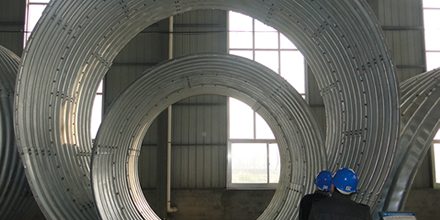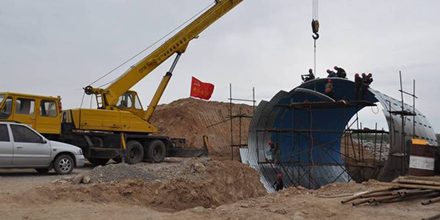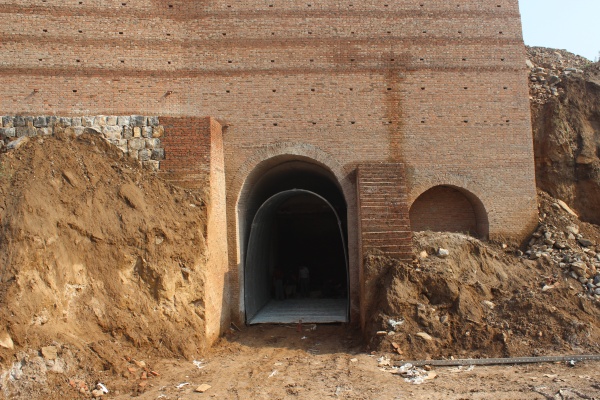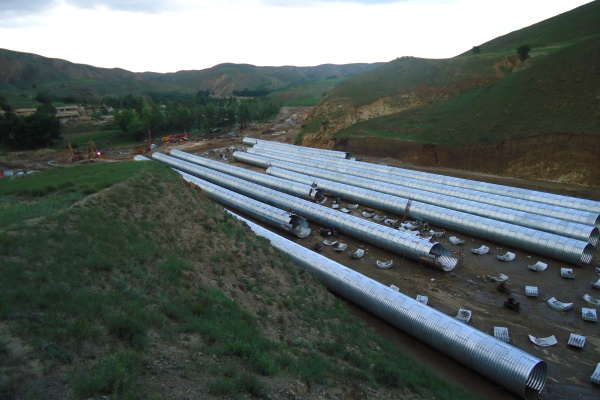Suitable Applications Of Corrugated Steel Pipe
Abstract: The design of highway corrugated steel pipe culverts mainly includes five parts. First, calculate water flow and determine pipe diameter. Second, design foundation depth and installation angles. Third, perform structural calculations. Fourth, plan anti-corrosion methods. Fifth, detail connection parts and material strength requirements. Compared with concrete pipes, corrugated steel pipes require special water flow calculations due to their wavy surfaces. While needing simpler foundations (often just soil replacement), these pipes have both advantages and limitations - this article focuses on their best uses, structural design points, and corrosion prevention.
(1) Pipe size must allow safe passage of floodwater/ice/mudflows while preventing upstream flooding or downstream erosion that could damage roadbeds.
(2) Consider existing/proposed nearby water structures and their impact on river changes.
(3) Maintain natural water flow patterns - avoid over-compressing river channels.
(4) Determine pipe size based on flood data, soil type, and slope reinforcement. Allow 25% flow reduction if upstream water storage is possible.
(5) Prefer non-pressure design. Ensure proper clearance between water surface and pipe top during floods.
(6) Calculate vehicle load distribution - spread wheel loads at 30° angles from tire contact areas. Overlapping areas use outermost spread lines.
2.1 Key Advantages.International experience shows properly treated steel corrugated pipes can last 50+ years. Current Chinese anti-corrosion methods (though less advanced) still provide 20-30 year lifespan. With maintenance/over-thickening, 50-year service becomes achievable - sufficient for most highways.
In problem soils (permafrost, soft clay, etc.), traditional concrete culverts often fail within 20 years from uneven settling. Steel's flexibility prevents this damage while reducing road stress concentrations. Its bendable nature also minimizes roadbed "step faults" at culvert connections, improving driving safety.
2.2 Usage Conditions.Three critical requirements:
(1) Wall thickness must keep stresses below steel's safety limits under load.
(2) Corrosion protection must meet minimum standards, with extra thickness allowance.
(3) Control deformation under load - select proper wave patterns/wall thicknesses. For shallow burial under high-grade roads, limit pipe deformation to prevent roadbase distortion.
2.3 Selection Principles Of Corrugated Steel Pipe Choose steel corrugated culverts when they offer practical, safe, cost-effective solutions that match project needs. Consider: Road class/importance ,Terrain/geological challenges Construction accessibility, Maintenance conditions ,Re-coating needs.
Priority use areas include: (1) Problem soil regions (permafrost/expansive soils/etc.) (2) Remote/high-risk construction zones (3) Material-scarce areas (4) Emergency repair projects needing fast completion
The selection of highway steel corrugated pipe culverts must follow the principles of applicability, safety, and economy, and fully utilize the mechanical performance advantages of steel corrugated pipe structures on the basis of meeting functional requirements. The design of highway steel corrugated pipe culverts should adhere to the principles of adapting to local conditions, leveraging advantages, and not blindly using them. In addition to fully considering the basic characteristics of the engineering project, including highway grade, importance, topography, adverse geological conditions, roadbed construction, etc., the following factors should also be considered in the design: construction conditions and convenience; Maintenance conditions; Secondary anti-corrosion. Steel corrugated pipe culverts should be given priority in the following areas.
 Products
Products Application
Application



